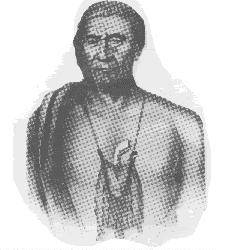

The Native American nations are divided into large groups based on language, called linguistic families. The languages spoken by the nations within each these groupings all evolved from a common root language, giving rise to the belief that they evolved from a common ancestral tribe. There are six base Native American linguistic families: Algonkian, Siouan, Penutian, Nadene, Aztec-Tanoan, and Eskimo-Aluet. Some of these have sub-groupings, or branches, as well.
The Lėnape are members of the Algonkian linguistic family. The Algonkian peoples, according to most linguists evolved from the Lėnape, and this belief is re-enforced by the fact that most Algonkian peoples refer to us as the "grandfather people" or simply as "the grandfathers". It is further re-enforced by the fact that the L-dialect, the Algonkian dialect spoken by the Lėnape, is the dialect most close to the original Algonkian language, Proto-Algonkian, (Algic).
The Algonkians migrated from Siberia, across the Bering Straits, then eastward and southward. During the migration, many groups broke away and evolved their own culture based on their location. These groups became the Salish peoples of the west coast; the Cheyenne, Arapaho, Cree, Sauk & Fox, Ojibway, Blackfeet and many other of the plains and central nations. The body that eventually reached the east coast continued to break apart and move along the coastline forming the vast majority of the nations throughout the northeastern United States, such as the Mi'kmaq, Abenaki, Mahicans, Mohegans, Lėnape, Wampanoags, and many others.
The list below shows these nations and which part of the United States (and Canada) they historically inhabited. Many of the nations listed below had smaller sub-tribes which had minute variations in their respective dialects, but for brevity's sake I have listed only the dominant nations or confederacies. This listing is arranged by geographic regions.


There is a lot of confusion over these two terms, and many people use these terms erroneously. The Algonquin were a tribe which, historically, occupied north central Canada. The term Algonkian refers to members of a linguistic family, as described above. In fact, the letter "q" does not exist in many of the Algonkian languages, including Unami, which is the language spoken by the Lėnape.




This is one of three variations of the women's dance. As the name implies, only women perform these dances.
This Women's Dance begins with the dancers moving straight ahead with plain short steps, when the tempo changes, the dancers switch to a sideways step. When the song changes again, the dancers turn to face the opposite direction.